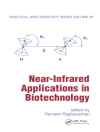Written by one of the world’s leading experts on the topic, this advanced textbook is the perfect introduction for newcomers to this exciting field.
Concise and clear, the text focuses on such key aspects as kinetics, reaction mechanism and surface reactivity, concentrating on the essentials. The author also covers various catalytic systems, catalysis by design, and activation-deactivation. A website with supplementary material offers additional figures, original material and references.
विषयसूची
Preface xv
Acknowledgments xix
Arrangement of This Book xxi
Part I Physical Chemistry and Kinetics 1
1 Heterogeneous Catalysis 3
1.1 What is Heterogeneous Catalysis? 3
1.2 Early Developments 4
1.2.1 Early Nineteenth Century Discoveries 5
1.2.2 Later Nineteenth Century Discoveries 7
1.3 The Three Basic Laws of Catalysis 7
1.3.1 Berzelius’ Catalysis Law 7
1.3.2 Ostwald’s Catalysis Law 8
1.3.3 Sabatier’s Catalysis Law 10
References 12
2 Heterogeneous Catalytic Processes 15
2.1 Introduction 15
2.2 Important Heterogeneous Catalytic Reactions and Processes 19
2.2.1 Hydrogenation and Dehydrogenation Reactions 19
2.2.1.1 Hydrogenation Reactions: Transition Metal Catalysts 19
2.2.2 Hydrocarbon Transformation Reactions 22
2.2.2.1 Brønsted Acid Catalysis 22
2.2.3 Oligomerization and Polymerization Catalysis 27
2.2.3.1 Methanol to Ethylene and Aromatics: The Aufbau Reaction 27
2.2.3.2 Fischer–Tropsch Catalysis 29
2.2.3.3 Disproportionation and Metathesis Reaction: Single Site Catalysis 32
2.2.3.4 Polymerization: Surface Coordination Complex Catalyst 35
2.2.4 Hydrodesulfurization and Related Hydrotreating Reactions 36
2.2.4.1 Hydrodesulfurization 36
2.2.4.2 The Biomass Refinery 37
2.2.5 Oxidation and Reduction Reactions 38
2.2.5.1 Steam Reforming 38
2.2.5.2 Nh 3 to No X Oxidation 39
2.2.5.3 NO Reduction Catalysis 45
2.3 Summary 48
References 51
3 Physical Chemistry, Elementary Kinetics 59
3.1 Introduction 59
3.2 Catalyst Characterization 63
3.2.1 Langmuir Adsorption Isotherm 64
3.2.2 Measurement of Pore Volume 65
3.2.3 Porosity 66
3.2.4 Temperature-Programmed Reactivity Measurements 67
3.2.5 Spectroscopic Techniques 68
3.3 Elementary Kinetics 68
3.3.1 Lumped Kinetics Expressions: Kinetic Determination of Key Reaction Intermediates 68
3.3.1.1 The Rate Constant of an Elementary Reaction 68
3.3.1.2 Elementary Catalytic Reaction Kinetics 71
3.3.2 Sabatier Principle and Volcano Curves: Brønsted–Evans–Polanyi Relations 78
3.3.2.1 Brønsted–Evans–Polanyi Relations of Elementary Surface Reaction Rate Constants 79
3.3.2.2 The Sabatier Volcano Curve 84
3.3.2.3 The Reaction Energy Diagram of the Catalytic Reaction Cycle 90
3.3.2.4 Electrocatalysis and Sabatier Principle Optimum 94
3.3.2.5 Temperature Dependence of Catalytic Reaction Rate 96
3.3.2.6 Summary: The Order of Reaction Rate 101
3.4 Transient Kinetics: The Determination of Site Concentration 104
3.5 Diffusion 106
3.5.1 Concentration Profiles 106
3.5.2 Effectiveness Factor 107
3.5.3 Diffusion in Zeolitic Micropores 110
References 114
4 The State of the Working Catalyst 117
4.1 Introduction 117
4.2 Surface Reconstruction 119
4.3 Compound Formation: Activation and Deactivation 123
4.4 Supported Small Metal Particles 124
4.4.1 Nature of the Support Material 125
4.4.2 Reactivity and Stability 127
4.4.3 Summary 128
4.5 Structure Sensitivity of Transition Metal Particle Catalysts 129
4.5.1 Particle Size and Structure Dependence of Heterogeneous Catalytic Reactions 129
4.5.2 Site Generation 133
4.6 Alloys and Other Promotors 133
4.7 The Working Zeolite Catalysts 136
4.8 The State of the Mixed Oxide Surface 139
4.9 Summary 139
References 140
5 Advanced Kinetics: Breakdown of Mean Field Approximation 145
5.1 Introduction 145
5.2 The Kinetic Monte Carlo Method: Ru O 2 Catalyzed Oxidation 146
5.3 Single Molecule Spectroscopy 149
5.4 Catalytic Self-Organizing Systems 153
5.4.1 Introduction 153
5.4.2 Heterogeneous Catalytic Self-Organizing Systems 154
5.4.2.1 Alternation Between Two Different Surface Phases: Spiral Wave Formation 155
5.4.2.2 Competitive Reactive Steps Prevent Reactive Phase Formation 165
References 165
Part II Molecular Heterogeneous Catalysis 167
Introduction 167
References 171
6 Basic Quantum-Chemical Concepts, The Chemical Bond Revisited (Jointly Written with I. Tranca) 173
6.1 Introduction 173
6.2 The Definitions of Partial Density of States and Bond Order Overlap Population 174
6.3 Diatomic Molecules that Have σ Bonds 176
6.4 Diatomic Molecules with π Bonds 182
6.5 Comparison of the Electronic Structure of Molecules and Solids 186
6.6 Chemical Bonding in Transition Metals 190
6.6.1 The Electronic Structure of the Transition Metals 190
6.6.2 The Relative Stability of Transition Metal Structures 199
Appendix 205
References 205
7 Chemical Bonding and Reactivity of Transition Metal Surfaces 209
7.1 Introduction 209
7.2 The Natureofthe Surface Chemical Bond 210
7.2.1 The Electronic Structure of the Transition Metal Surface 210
7.2.2 Chemisorption of Atoms and Molecules (This Section has been Jointly Written with I. Tranca.) 213
7.2.2.1 The H Adatom: The Covalent Surface Bond 214
7.2.2.2 Adsorption of the Carbon Atom: The Surface Molecular Complex 220
7.2.2.3 The Oxygen Adatom: The Polar Surface Bond 228
7.2.3 Adsorption Site Preference as a Function of Accessible Free Valence 233
7.2.3.1 Chemisorption of Molecular Fragments Ch X , nh X , andoh X Species: Coordination Preference as a Function of Accessible Free Valence 233
7.2.3.2 CH 3 and NH 3 Chemisorption: The Agostic Interaction 235
7.2.4 Adsorption as a Function of Coordinative Unsaturation of Surface Atoms: Relation with d Valence Band Energy Shift 243
7.2.5 Chemisorption of CO: Donative and Backdonative Interactions 249
7.2.6 Lateral Interactions 258
7.2.7 Scaling Laws 259
7.2.8 In Summary: The Adsorbate Chemical Bond 262
7.3 The Transition States of Elementary Surface Reactions 264
7.3.1 Adsorbate σ-Bond Activation 265
7.3.1.1 Activation of Methane 265
7.3.1.2 The Oxidative Addition and Reductive Elimination Model 268
7.3.1.3 The Umbrella Effect 269
7.3.1.4 Activation Entropy 270
7.3.1.5 σ-Bond Activation of Molecules that Bind Through their Lone Pair Orbital 270
7.3.2 Dissociation of Diatomic Molecules with π-Bonds 273
7.3.2.1 Principle of Non-Shared Bonding with the Same Surface Metal Atom 274
7.4 Reactivity of Surfaces at High Coverage 274
7.4.1 Decreased Surface Reactivity and Site Blocking 275
7.4.2 Adatom Co-Assisted Activation 276
7.4.2.1 Hydrogen Activated Dissociation 276
7.4.2.2 Oxygen Assisted X–H Bond Cleavage 277
7.4.2.3 Reactivity of the Oxide Overlayers 281
References 286
8 Mechanisms of Transition Metal Catalyzed Reactions 293
8.1 Introduction 293
8.2 Hydrogenation Reactions 293
8.2.1 Ammonia Synthesis 293
8.2.1.1 Heterogeneous Catalytic Reaction 293
8.2.1.2 Enzyme Catalysis 296
8.2.2 Synthesis Gas Conversion to Methane and Liquid Hydrocarbons 297
8.2.3 Hydroconversion of Hydrocarbons 306
8.2.3.1 Ethylene 306
8.2.3.2 Acetylene 309
8.2.3.3 Hydrogenolysis and Isomerization 310
8.2.4 NH 3 and CH 4 to HCN 314
8.2.5 Electrocatalysis; H 2 Evolution 316
8.3 Oxidation Reactions 321
8.3.1 Synthesis Gas from Methane 321
8.3.1.1 Steam Reforming 321
8.3.1.2 Methane Oxidation 322
8.3.1.3 NH 3 Oxidation to NO and N 2 323
8.3.1.4 Selective Oxidation of Ethylene 325
8.4 Uniqueness of a Metal for a Particular Selective Reaction 337
References 338
9 Solid Acid Catalysis, Theory and Reaction Mechanisms 345
9.1 Introduction 345
9.2 Elementary Theory of Surface Acidity and Basicity 345
9.2.1 The Pauling Charge Excess 345
9.2.2 The Chemistry of the Zeolitic Proton 351
9.2.2.1 Vibrational Spectroscopy of the OH Bond 352
9.2.2.2 Quantum Chemistry of the Zeolite Acidic OH Chemical Bond 358
9.2.2.3 The Proton Transfer Reaction 364
9.2.2.4 Chemical Reactivity Probes of Proton Donation Affinity: H/D Exchange Reactions 367
9.3 Mechanism of Reactions Catalyzed by Zeolite Protons 371
9.3.1 Introduction to Acid-Catalyzed Reactions and Their Mechanism 371
9.3.2 Elementary Reactions in Acid Catalysis 374
9.3.2.1 Alkene Protonation 374
9.3.2.2 Alkane Activation 378
9.3.2.3 Alkene Isomerization 383
9.3.2.4 n-Butene Isomerization 386
9.3.2.5 β-C–C Bond Cleavage 388
9.3.2.6 The Hydride Transfer Reaction 390
9.3.3 Catalytic Reaction Cycles and Kinetics 394
9.3.3.1 Physical Chemistry of Zeolite Catalysis 394
9.3.3.2 Catalytic Cracking 396
9.3.3.3 Bifunctional Catalysis 402
9.3.3.4 Methanol Aufbau Chemistry: Alkylation by Methanol 413
9.4 Acid Catalysis and Hydride Transfer by Enzyme Catalysts 420
References 421
10 Zeolitic Non-Redox and Redox Catalysis, Lewis Acid Catalysis 429
10.1 Introduction 429
10.2 Non-Reducible Cations; The Electrostatic Field 429
10.3 Catalysis with Non-Framework Non-Reducible Cations 433
10.3.1 Alkali and Earth Alkali Ions 433
10.3.2 Non Redox Oxycationic Clusters 437
10.4 Catalysis by Non-Framework Redox Complexes 440
10.4.1 NO Reduction Catalysis: Selective Catalytic Reduction 440
10.4.2 N 2 O Decomposition Catalysis 441
10.4.3 Selective Oxidation of Benzene and Methane: The Panov Reaction 443
10.5 Related Homogeneous and Enzyme Oxidation Catalysts 446
10.6 Lewis Acid Catalysis by Non-Reducible Cations Located in the Zeolitic Framework 453
10.6.1 Bayer–Villiger Oxidation 454
10.6.2 Meerwein–Ponndorf–Verley Reduction and Oppenauer Oxidation 456
10.6.3 Homogeneous and Biocatalyst Analogs 461
10.6.4 Propylene Epoxidation 461
10.7 Catalysis by Redox Cations located in the Zeolitic Framework: The Thomas Oxidation Catalysts 463
10.7.1 Bayer–Villiger Oxidation with Molecular Oxygen 464
10.7.2 Zeolite Catalysts for Caprolactam Synthesis 464
10.7.3 Alkane Oxidation 467
10.8 Summary of Zeolite Catalysis 468
References 469
11 Reducible Solid State Catalysts 475
11.1 Introduction 475
11.2 Chemical Bonding of Transition Metal Oxides and Their Surfaces 475
11.2.1 Electronic Structure of the Metal Oxide Chemical Bond 475
11.2.2 The Electronic Structure of the Transition Metal Oxides 478
11.2.3 The Electronic Structure of the Transition Metal Oxide Surface 488
11.2.4 Trends in Adsorption Energies of O Adatoms to Transition Metal Oxide Surfaces 490
11.2.5 Reconstruction of Polar Surfaces 492
11.3 Mechanism of Oxidation Catalysis by Group V, VI Metal Oxides 494
11.3.1 Reactivity Trends 494
11.3.2 Selective Oxidation of Propylene and Propane 500
11.3.2.1 Propylene to Acrolein Conversion 500
11.3.2.2 Propane Ammoxidation 502
11.3.3 Methane Conversion to Higher Hydrocarbons 503
11.3.3.1 Direct CH 4 Conversion to Aromatics 503
11.3.3.2 The Mechanism of Oxidative Methane Coupling, the Li O–Mg O System 504
11.4 Metathesis and Polymerization Catalysis: Surface Coordination Complexes 507
11.4.1 Alkene Disproportionation and Metathesis 507
11.4.2 Polymerization of Propylene 511
11.4.3 Ziegler–Natta Polymerization versus Metathesis Reaction 514
11.5 Sulfide Catalysts 515
11.6 Electrocatalysis: The Oxygen Evolution Reaction (OER) 520
11.6.1 Trends in OER Reactivity 520
11.6.2 Reaction Mechanism of OER Reaction 522
11.6.3 Summary Mechanism of OER Reaction 531
11.6.4 Comparison with the OER in Enzyme Catalysis 532
11.7 Photocatalytic Water Splitting 538
11.7.1 Device Considerations 538
11.7.2 Mechanism of Photoactivation of Water 540
References 545
Index 553
लेखक के बारे में
Rutger Anthony van Santen is professor at the Institute of Molecular Complexity at Eindhoven Technical University (TU/e, The Netherlands). He received his doctorate as theoretical chemist from Leiden University in 1971. After his initial stay at Shell Research (Amsterdam, The Netherlands), he became professor in Catalysis at the Technical University Eindhoven (The Netherlands) in 1986. In 1993, van Santen was the founding director of the Netherlands Institute of Catalysis and from 2001 to 2005 he was Rector Magnificus of TU/e. He is a member of the Royal Netherlands Academy of Arts and Sciences and a Knight in the order of the Dutch Lion. His research interests are in the field of the molecular aspects of heterogeneous catalysis with the following three main themes: computational studies of surface-chemical reactivity, mechanism in heterogeneous catalysis and physical chemistry of catalyst synthesis.












